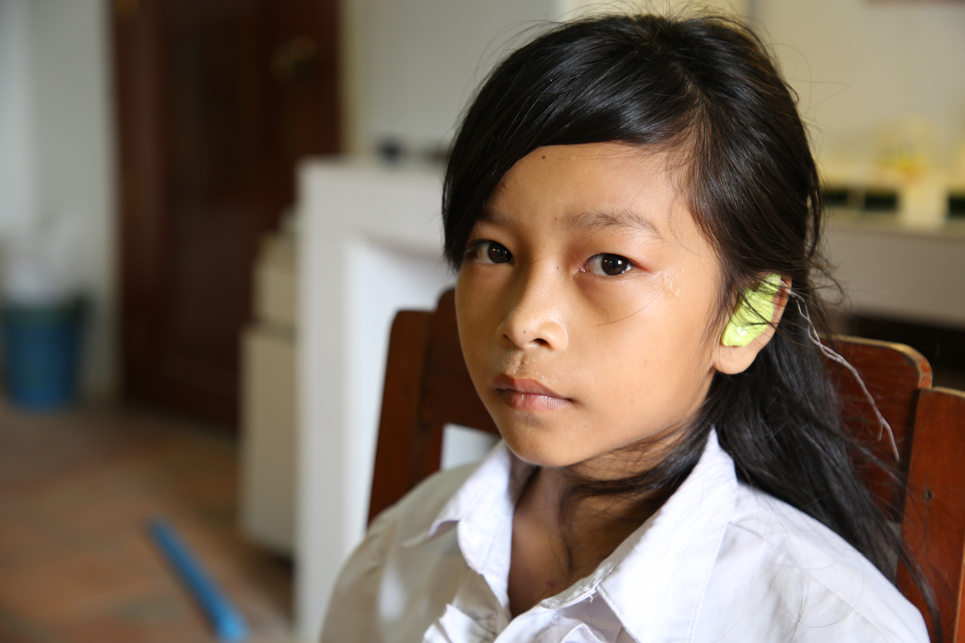Around 20kms down a narrow, winding dirt road from the centre of Houameuang District, the village of Homsai is perched on a scenic green mountainside.
The people of this village are Hmong, and speak their own native language, with many people of all ages continuing to wear traditional Hmong-style clothing.
Yet although the local people here stay true to their culture and language, there is one place in the village where Lao language can be heard on a daily basis.
“One, two, three,” comes a small voice counting carefully in Lao from a new building near the village gates.
Here at the Homsai Village Early Childhood Education Centre, the four-year-old students are crouched in a circle, practising their Lao numbers by counting pictures of flowers.
Every day, a group of Homsai children between the ages of four and six come to study Lao language, numbers, and letters with their two dedicated teachers at the pre-primary school ChildFund Laos has helped construct in their village.
Although this is a school, not all of the learning is focused on literacy and numeracy, and much of the teaching occurs outside the classroom.
Making hand-washing fun
Six-year-old Tou eagerly rubs his hands together and watches his other teacher, Ms Phetpawn, as she begins the demonstration.
She rubs her hands together deliberately, focusing on one surface at a time to ensure cleanliness.
“One, two, three, four,” she says, rubbing the backs of her left-hand fingers.
“One, two three, four,” for her palms, and then the sides of her hands, her fingertips, and every other potentially unclean surface.
The children follow suit, scrubbing their hands clean before finally rinsing off the suds in the water.
Tou says that after learning this method of thorough hand-washing at school, he even likes washing his hands in the same way when he is at home.
“Children love playing with water,” Ms Phetpawn says. “So for the kids, this is an activity they have a lot of fun with.”

Encouraging good dental hygiene
Luckily for these water-loving children, the hygiene training doesn’t stop at hand washing.
After every child has had the chance to dry their hands on a towel, the guided toothbrushing begins, and more than a dozen small yellow toothbrushes start moving back and forth across rows of small pearly-white teeth.
“A lot of the children don’t learn such good hygiene skills at home,” Phetpawn says. “Some of them only get a bath a couple times a week, so we often give them a chance to bathe at school in the afternoons before they go home.”
The teacher’s promotion of good hygiene seems to be working.
Taking lessons from the classroom home
Tou says that he enjoys the opportunity to keep himself clean.
“I like that my hands are nice and clean after I wash them,” he says.
His favourite part, he adds, is getting to wash his face. He says that doing the hygiene activities makes him happy.
In addition to being enjoyable for the students, Ms Mackee and Ms Phetpawn believe that the work they do to promote good hygiene is very important in terms of keeping children healthy.
“Children play in a lot of dirty places and like eating snacks, so their hands can get pretty messy. We usually take them to wash their hands twice a day, both in the mornings and in the afternoons,” Ms Phetpawn says.
Tou also makes an effort to keep himself clean when he is home.
The youngest of nine children, he explains that he and his brothers and sisters have soap and toothbrushes at home, and that they make good use of them to ensure they stay clean and healthy.
This project is supported by the Australian Government through the ANCP Program.









